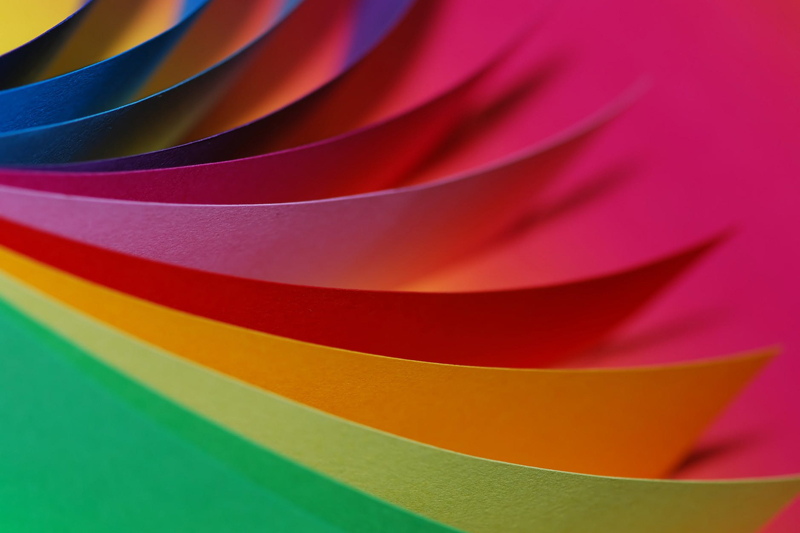Dry Embossing

Embossing is a technique that leaves a raised design on the surface of paper. Embossing can be done in a number of ways. In dry embossing, a stylus is rubbed at the back of the paper, causing the fibers to stretch, thus producing a raised surface. In wet embossing, ink is used together with embossing powder which is then melted with a heat gun to produce the raised design. This method is also called heat embossing. Another type of wet embossing uses dimensional glaze directly applied onto a design and allowed to dry, giving a raised, glossy, glass-like finish.
In this article we’ll look at dry embossing, which is can add a subtle yet elegant touch to your paper craft projects.
The tools used for dry embossing are a stylus, which looks like a pen with a ball at the tip; a stencil, often made of brass; and a light box. Basically, you place your stencil onto a light box, place the paper over the stencil, then trace the outline of the design with the stylus. Turn your paper over to see the raised design.
It’s important to remember that you’ll be working from the back of the paper, so that if you’re embossing words or letters, make sure that your stencil is reversed when you put it on the light box before you start embossing.
Here are some other tips for dry embossing:
If you don’t have a stylus, you can use a spent ballpoint pen, the rounded head of a crochet hook, or the tip of a paint brush handle.
If you don’t have a light box, you can use a sunlit window. Use low-tack, repositionable tape like washi tape to attach your stencil to the window pane, and then tape the paper over the stencil. Proceed with embossing the paper.
You can also make a light box by putting a flashlight under a deep, flat-bottomed clear or translucent plastic storage bin or tub. Or rest the ends of a thick sheet of glass on two stacks of books, and place the light source between the stacks.
You can make your own stencils from thick cardboard like a cereal box. Cut out designs using a craft knife and cutting mat.
Choose the right paper. Dry embossing works well with cardstock, vellum and parchment paper. Avoid using flimsy paper like tissue paper, as this will tear.
Rubbing a candle or piece of wax paper against the surface of the cardstock before embossing will lessen the friction between the stylus and the cardstock, making the stylus glide easily. Alternatively, you can dip the stylus in beeswax before rubbing the cardstock.
In this article we’ll look at dry embossing, which is can add a subtle yet elegant touch to your paper craft projects.
The tools used for dry embossing are a stylus, which looks like a pen with a ball at the tip; a stencil, often made of brass; and a light box. Basically, you place your stencil onto a light box, place the paper over the stencil, then trace the outline of the design with the stylus. Turn your paper over to see the raised design.
It’s important to remember that you’ll be working from the back of the paper, so that if you’re embossing words or letters, make sure that your stencil is reversed when you put it on the light box before you start embossing.
Here are some other tips for dry embossing:
If you don’t have a stylus, you can use a spent ballpoint pen, the rounded head of a crochet hook, or the tip of a paint brush handle.
If you don’t have a light box, you can use a sunlit window. Use low-tack, repositionable tape like washi tape to attach your stencil to the window pane, and then tape the paper over the stencil. Proceed with embossing the paper.
You can also make a light box by putting a flashlight under a deep, flat-bottomed clear or translucent plastic storage bin or tub. Or rest the ends of a thick sheet of glass on two stacks of books, and place the light source between the stacks.
You can make your own stencils from thick cardboard like a cereal box. Cut out designs using a craft knife and cutting mat.
Choose the right paper. Dry embossing works well with cardstock, vellum and parchment paper. Avoid using flimsy paper like tissue paper, as this will tear.
Rubbing a candle or piece of wax paper against the surface of the cardstock before embossing will lessen the friction between the stylus and the cardstock, making the stylus glide easily. Alternatively, you can dip the stylus in beeswax before rubbing the cardstock.

Related Articles
Editor's Picks Articles
Top Ten Articles
Previous Features
Site Map
Content copyright © 2023 by Mia C. Goloy. All rights reserved.
This content was written by Mia C. Goloy. If you wish to use this content in any manner, you need written permission. Contact Mia C. Goloy for details.


